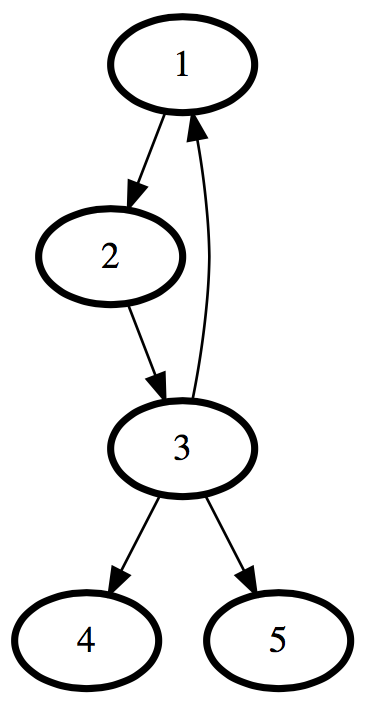The adjacency matrix I have at the start is
[0,1,0,0,0]
[0,0,1,0,0]
[1,0,0,1,1]
[0,0,0,0,0]
[0,0,0,0,0]
I don't understand why this matrix^9999 equals
[1,0,0,1,1]
[0,1,0,0,0]
[0,0,1,0,0]
[0,0,0,0,0]
[0,0,0,0,0]
or why this matrix^33334 equals
[0,1,0,0,0]
[0,0,1,0,0]
[1,0,0,1,1]
[0,0,0,0,0]
[0,0,0,0,0]
Can someone please explain what is happening?

